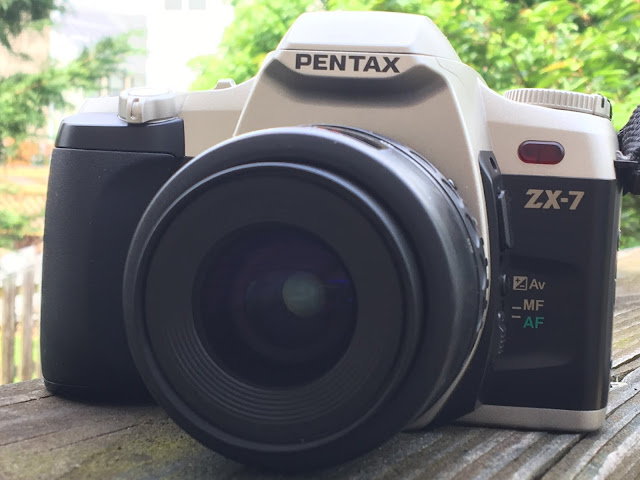It would have done me a lot of good to simply listen and pay attention years ago. A lot of good.
Before taking a break from shooting film, I predominantly shot slide film. I really had a distaste for color negative film, finding the color palette of negative films to be lacking compared to the bold and vibrant colors of transparency film. There were a few exceptions, such as the vivid Agfa Ultra 50 film, that were known departures from this rule And while there were general purpose transparency films that had rich and vivid color renditions, there seemed no such thing on the print side of the house.
I recall hearing a decent amount of love for Fuji Reala 100 in particular as a print film with a very likelike vividness rendered in rich hues, but thought this simply meant it rendered accurate skin tones for portraiture, and feeling nothing in the way of loss that I'd neglected to give "yet another print film" at least one try.
Upon ordering the last couple rolls of Agfa Ultra 50 from a favorite Etsy seller, I was greeted with a happy little bonus of a pair of rolls of Fuji Reala 100 tossed into the package. Thankful to have this bonus, but still not knowing much about the film, I tossed it in with the rest of my expired film and elected to just run the first roll through the Vivitar 5500PZ. This choice was not as much to test the film but to have some cheap color results to show from this camera.
I took the camera along with me on a few Spring outings and before long, I'd wrapped up this roll of film handily, dropping it into one of my home-developed batches of color film to await some results to scan and post, all the while expecting nothing terribly special in the way of results from this film that had been discontinued about a decade ago.
But that would quickly change. As the scans began to complete, I realized just what a phenomenal film this is. Even a poorly done shot on Fuji Reala can look remarkably impressive when it contains a nice pop of color to draw in the eye. With each additional scan, I realized that I really should have been more open minded regarding this film during the days when it was being made, as I'd almost instantly come to be remiss at its discontinuance.
So without further delay, have a look at the Fuji film known as Reala, and join me in my sorrowful realization that this is yet one more amazing film that is all but unavailable today.
It is a major irritation when your camera gives you an affirmative green light that your subject is in focus when it really is not. Still, the color rendition of this film is nothing short of amazing, as seen here.




















